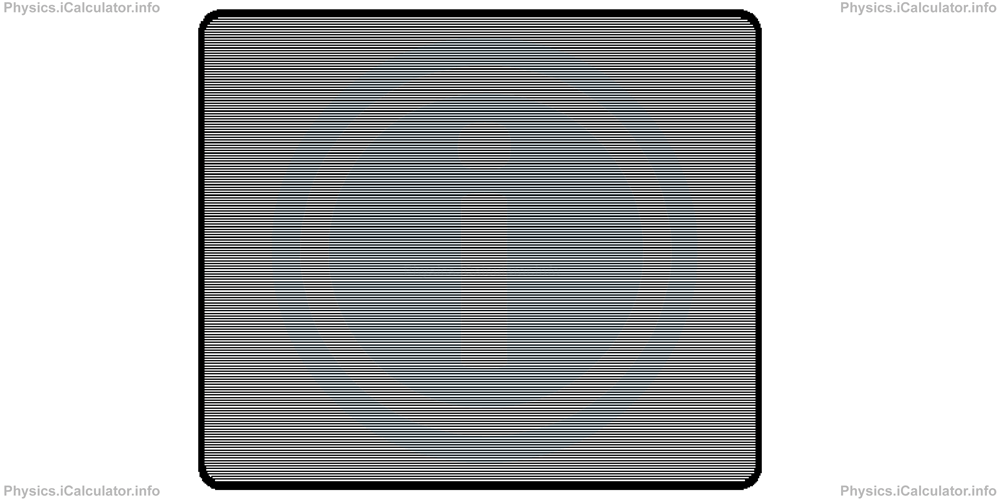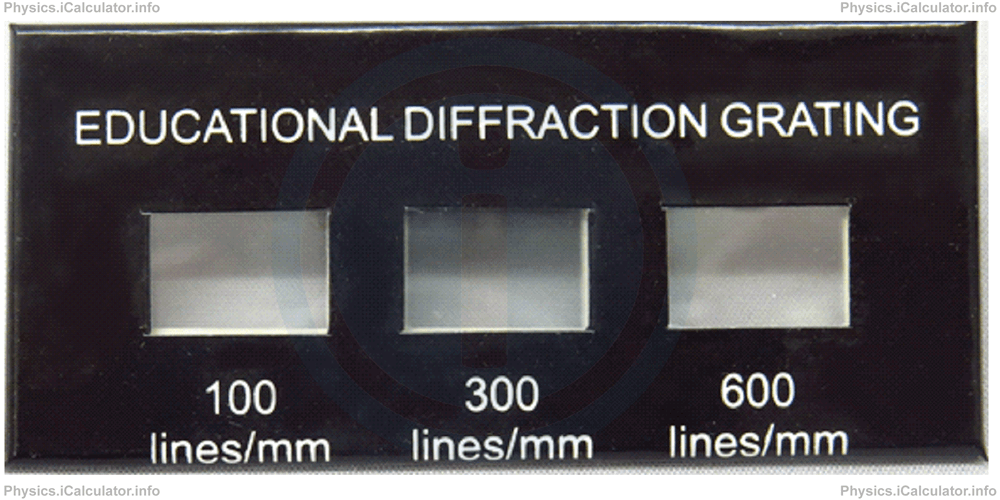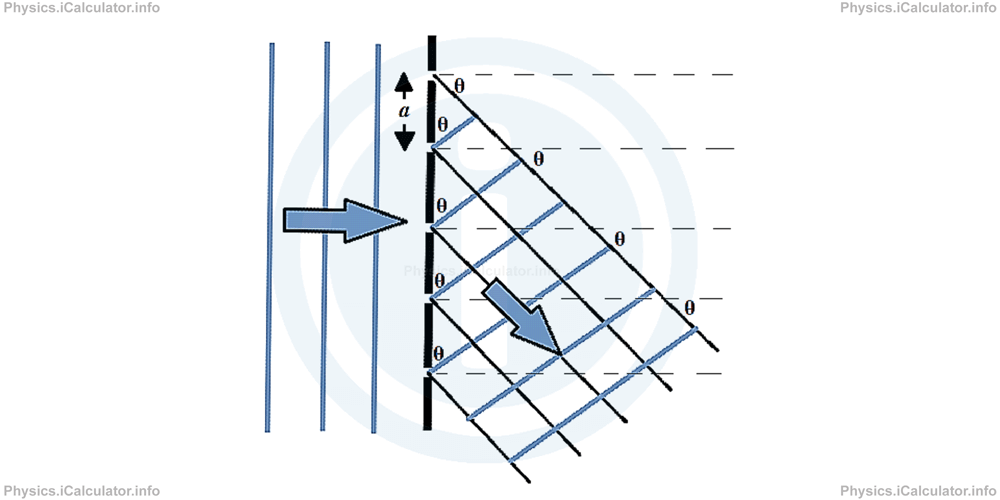Menu
Physics Lesson 12.4.4 - Diffraction Gratings
Please provide a rating, it takes seconds and helps us to keep this resource free for all to use
Welcome to our Physics lesson on Diffraction Gratings, this is the fourth lesson of our suite of physics lessons covering the topic of Interference and Diffraction of Light, you can find links to the other lessons within this tutorial and access additional physics learning resources below this lesson.
Diffraction Gratings
A diffraction grating tool is very similar in concept to the double-slit system discussed earlier but with more openings. It has a very large number of parallel lines on a glass or plastics obtained through grating process as shown in the figure.

The figure below shows an educational diffraction grating tool whose parameters (number of gratings per mm) are written under each glass.

Obviously, we cannot see the gratings on naked eye, as they are very close and thin.
A diffraction grating is often (but not only) used to split the white light into colours. It is also used to determine the wavelength of a light wave similarly to the methods mentioned earlier in single-slit diffraction and Young Double-Slit Experiment.
If we enlarge a part of a diffraction grating and see it in profile, the view obtained will be as shown below.

We can use the equation for the condition of constructive interference
to determine the wavelength of a certain light beam. Let's consider an example.
Example 3
Monochromatic (one-coloured) light is incident at right angle to a diffraction grating having 2000 lines per centimetre. The angular separation between the zeroth and the fourth-order maxima is 300. Calculate the wavelength of the incident light.
Solution 3
First, let's work out the separation a between two adjacent gratings. We have
= 0.0005 cm
= 5 × 10-4 cm
= 5 × 10-6 m
Given that N = 4 and sin 300 = 0.5, we obtain
5 × 10-6 × 0.5 = 4 × λ
2.5 × 10-6 = 4 × λ
λ = 2.5 × 10-6/4
= 0.625 × 10-6 m
= 6.25 × 10-7 m
You have reached the end of Physics lesson 12.4.4 Diffraction Gratings. There are 4 lessons in this physics tutorial covering Interference and Diffraction of Light, you can access all the lessons from this tutorial below.
More Interference and Diffraction of Light Lessons and Learning Resources
Whats next?
Enjoy the "Diffraction Gratings" physics lesson? People who liked the "Interference and Diffraction of Light lesson found the following resources useful:
- Gratings Feedback. Helps other - Leave a rating for this gratings (see below)
- Optics Physics tutorial: Interference and Diffraction of Light. Read the Interference and Diffraction of Light physics tutorial and build your physics knowledge of Optics
- Optics Revision Notes: Interference and Diffraction of Light. Print the notes so you can revise the key points covered in the physics tutorial for Interference and Diffraction of Light
- Optics Practice Questions: Interference and Diffraction of Light. Test and improve your knowledge of Interference and Diffraction of Light with example questins and answers
- Check your calculations for Optics questions with our excellent Optics calculators which contain full equations and calculations clearly displayed line by line. See the Optics Calculators by iCalculator™ below.
- Continuing learning optics - read our next physics tutorial: Dispersion of Light
Help others Learning Physics just like you
Please provide a rating, it takes seconds and helps us to keep this resource free for all to use
We hope you found this Physics lesson "Interference and Diffraction of Light" useful. If you did it would be great if you could spare the time to rate this physics lesson (simply click on the number of stars that match your assessment of this physics learning aide) and/or share on social media, this helps us identify popular tutorials and calculators and expand our free learning resources to support our users around the world have free access to expand their knowledge of physics and other disciplines.